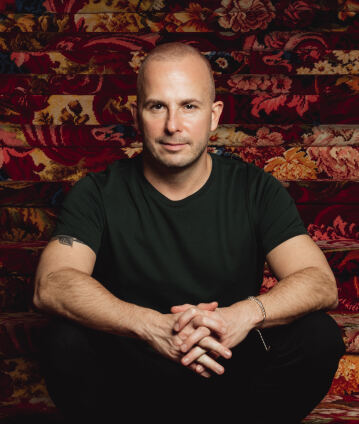Mahler’s Third with Yannick Nézet-Séguin and Joyce DiDonato

Mahler’s Third Symphony is akin to a musical creation story: “All of nature”, said the composer, “is given a voice in it”, and it also contains something deeply mysterious. The piece tells of plants, animals, and humans – and of divine love as the highest form of all existence. The conductor is Yannick Nézet-Séguin, and the vocal soloist is Joyce DiDonato, one of the leading mezzo-sopranos of our time.
Gustav Mahler was a workaholic, whose workload as a kapellmeister at the Stadttheater Hamburg was almost superhuman. During the summer holidays of 1895 and 1896, he withdrew to a simple hut on Lake Attersee to devote himself to composing. As his Third Symphony took shape, he wrote from the lake to Anna von Mildenburg, a singer who was close to him: “Imagine a work of such magnitude that it actually mirrors the whole world.”
Eight horns open the symphony with a fanfare like a force of nature. Blocks of raw motivic material collide in an animated jostling until, at the end of the movement, these forces appear to be tamed in the jubilation of vibrant nature. The Blumen Menuett unfolds, delicately crafted and perfumed with the sweetness of salon music. The dramaturgical epicentre of the work is the tragicomic scherzo: behind the mask of harmless folkloricism lies, according to Mahler, “an enormous laugh at the whole world”. The ethereal song of a post horn echoes in a dreamlike utopia. “O Mensch! Gib Acht!” (O man! Take heed!) warns the solo alto – about the fall of man? – but the confession, accompanied by the cheerful “Bimm bamm” of the children’s choir, almost turns into a sacred puppet show. Only in the heartfelt final movement does the chaos of the beginning come together. According to Mahler, it embodies pure love, “the zenith, the highest level that the world can be viewed from”.
This musical creation story brings together two star guests, Yannick Nézet-Séguin and Joyce DiDonato, who know both the Berliner Philharmoniker and Mahler’s music very well.
© 2026 Berlin Phil Media GmbH
Artists
Our recommendations
- Seiji Ozawa conducts Orff’s “Carmina Burana” at the 1989 New Year’s Eve Concert
- Bach’s “St Matthew Passion” with Simon Rattle and Peter Sellars
- “La Damnation de Faust” with Simon Rattle, Joyce DiDonato and Charles Castronovo
- Simon Rattle conducts Mahler’s “Symphony of a Thousand”
- 2017 New Year’s Eve Concert with Simon Rattle and Joyce DiDonato
- Ludovic Morlot and Joyce DiDonato